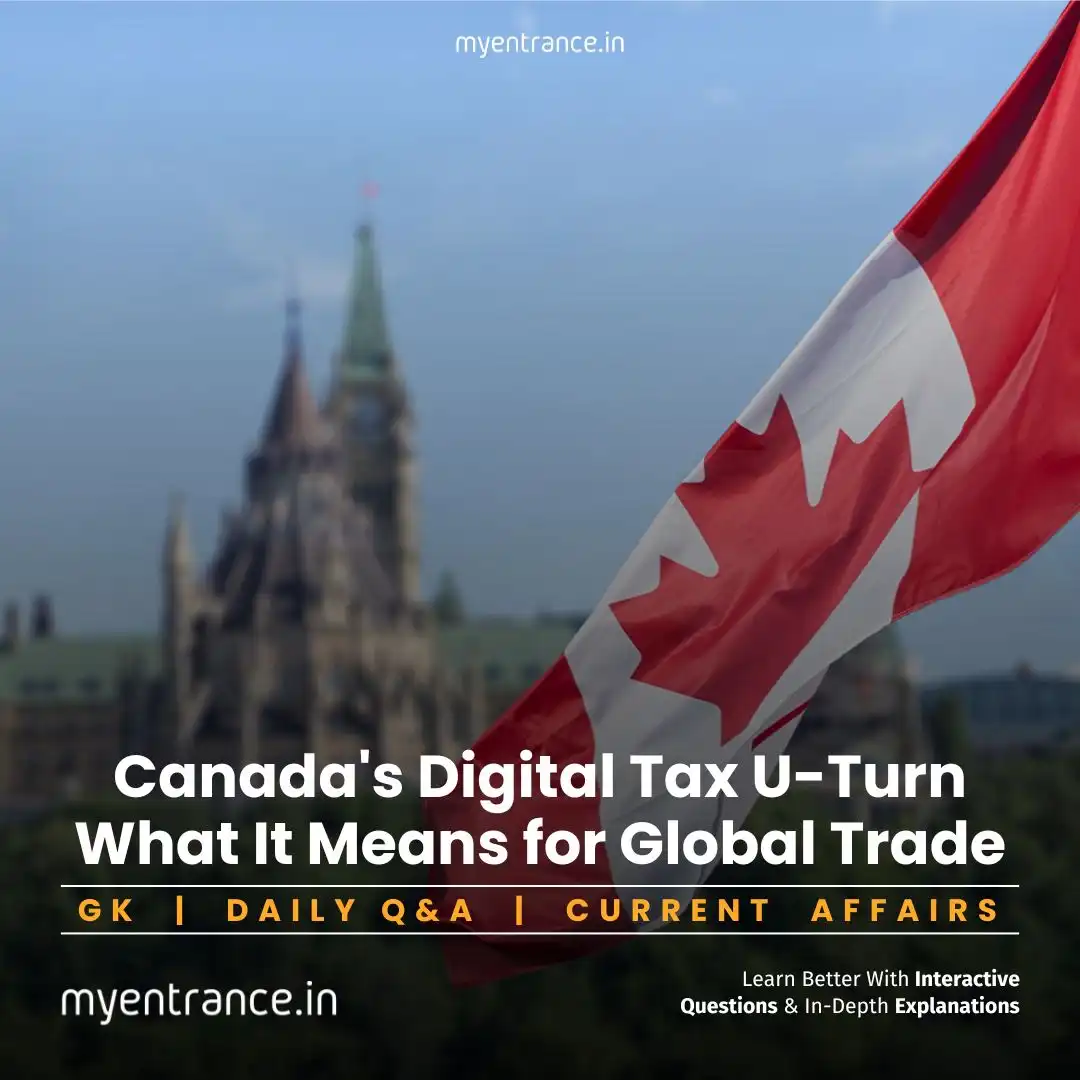Select Language
Why Canada Shelved Its Digital Tax Hours Before Launch: Key Insights
Canada scrapped its Digital Services Tax (DST) moments before its launch to salvage trade talks with the US. This sudden reversal exposes high-stakes global trade tensions every exam aspirant must understand.

The Digital Services Tax Drama
In a dramatic move, Canada ditched its 3% Digital Services Tax (DST) on June 30, 2024 – mere hours before it was set to take effect. This tax targeted global tech giants like Google, Meta, and Amazon, aiming to make them pay taxes on revenues generated from Canadian users. Crucially, it was retroactive to 2022, potentially costing US firms $2.7 billion.
Why Canada Proposed the DST
Canada argued that foreign tech companies profit heavily from Canadian users without paying fair local taxes. The DST aimed to capture revenue from digital services (like streaming, e-commerce, and ride-hailing) once a company crossed $20 million in annual Canadian revenue.
The US Backlash & Trade War Threat
The US called the DST a “blatant attack” and halted all trade negotiations. With Canada being America’s second-largest trading partner (bilateral trade hit $762 billion in 2023), this stalemate was disastrous. The US retaliated with steep tariffs:
25% tax on Canadian auto exports
50% duties on steel/aluminum
Additional 25% border tax (on top of standard 10%)
The U-Turn: Why Canada Folded
Facing economic retaliation and stalled trade deals, Canada prioritized mending US relations. Scrapping the DST revives negotiations before the July 21 trade deadline. Domestically, the tax was unpopular too – experts warned it could hike prices for everyday digital services used by Canadians.
Global Tax Tensions: Unilateral vs Multilateral Approaches
Canada’s retreat highlights a key conflict:
Unilateral taxes (like India’s Equalisation Levy) let countries target tech giants quickly but risk trade wars.
Multilateral frameworks (like the OECD’s global tax deal) seek consensus but progress slowly.
India’s levy differs from Canada’s DST – it targets specific digital ads/services, not broad revenue.
Why This Matters for Exams
Current Affairs: Crucial for SSC/PSC prelims (international relations) and mains (impact of developed nations’ policies on India).
Design Entrances (NID/NIFT): Tests analytical skills on global economic trends.
Key Themes: Digital taxation, US-Canada trade, and policy U-turns are recurring topics in GK sections.
Sample Q&A for Exam Prep
Q: Why did Canada propose a Digital Services Tax?
A: To tax global tech firms (like Google/Amazon) on revenues earned from Canadian users, ensuring fair contribution to national coffers.
Q: What triggered Canada’s last-minute DST withdrawal?
A: US pressure, including halted trade talks and retaliatory tariffs on Canadian exports.
Q: How does India’s Equalisation Levy differ from Canada’s DST?
A: India’s levy focuses narrowly on digital ads/e-services; Canada’s DST broadly taxed all digital revenue over $20M.
Q: What was the DST’s retrospective clause?
A: It applied taxes retroactively from January 2022.
Q: Why are unilateral digital taxes controversial?
A: They spark trade disputes (e.g., US tariffs) and undermine global tax cooperation efforts like the OECD deal.
Get 3 Months Free Access for SSC, PSC, NIFT & NID
Boost your exam prep!
Use offer code WELCOME28 to get 3 months free subscription. Start preparing today!















